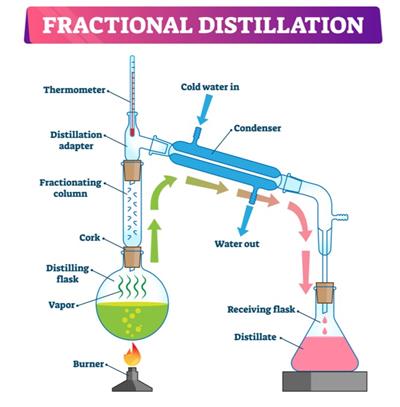
PUMPA - SMART LEARNING
எங்கள் ஆசிரியர்களுடன் 1-ஆன்-1 ஆலோசனை நேரத்தைப் பெறுங்கள். டாப்பர் ஆவதற்கு நாங்கள் பயிற்சி அளிப்போம்
Book Free DemoHow do you distinguish two miscible liquids with identical boiling points?
Alcohol and water, for example, are miscible, meaning they fully combine and do not form two layers (e.g. oil and water). Simple distillation and fractional distillation are two methods for isolating and purifying liquid products produced by chemical reactions.

Fractional distillation has two main steps, both of which require physical state changes. It can only operate for liquids with a have different boiling points, but the boiling points can be close.
Note: This process, however, is only effective if all of the liquids in the mixture are miscible (e.g., alcohol and water, hydrocarbons in crude oil, etc.) and do not break into layers (e.g., oil and water).
Fractional distillation:
Fractional distillation is used to separate a mixture of two or more miscible liquids with a difference in boiling points of <25 K, such as separating different gases from the air, different fractions from petroleum products, and so on. The less volatile liquid (with a higher boiling point) distils over first, followed by the more volatile liquid (with a lower boiling point).

Fractionating column
A simple fractionating column is a glass bead-filled tube. The beads act as a barrier for the vapours to cool and condense on several occasions.
For example, fractional distillation will also isolate an acetone and water mixture.
Applications:
- To separate mixtures of miscible liquids, fractional distillation is used.
- It is used to divide crude oil, also known as "petroleum," into useful fractions such as kerosene, gasoline, and diesel.
- It is also used to distinguish airborne gases.